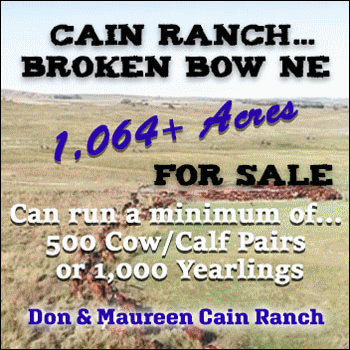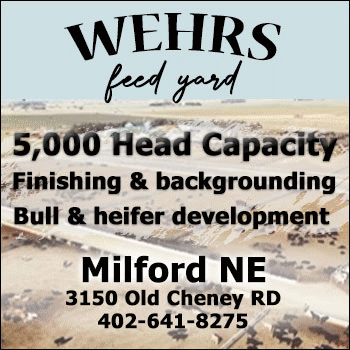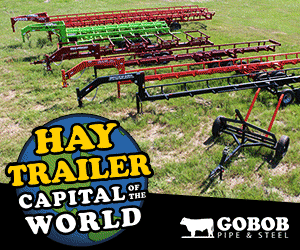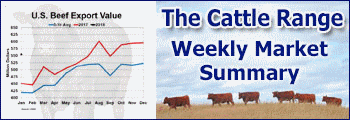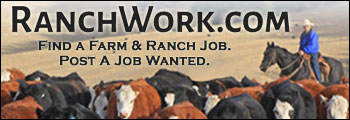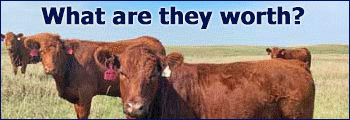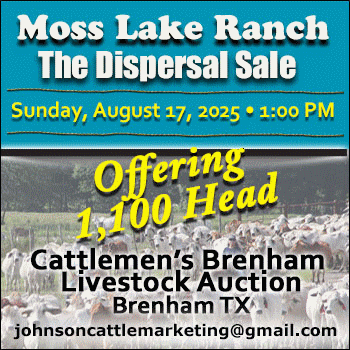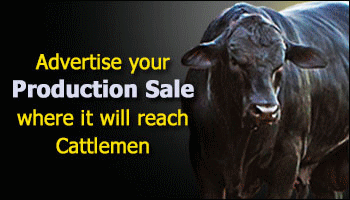New Texas A&M Report: Government Interference in Beef & Cattle Markets has Unintended Consequences; Will Cost Producers Billions
By North American Meat Institute
WASHINGTON, DC – In response to a bipartisan request from the House Agriculture Committee, Texas A&M University has completed a comprehensive report on the U.S. cattle and beef markets written by leading economists across the country. Among its key findings is that proposals increasing government intervention and mandates will cost livestock producers billions of dollars.
“Thursday the House Agriculture Committee will hold the fourth Congressional hearing this year on beef and cattle markets. It is no surprise that the Texas A&M analysis reflects the expert testimony at each hearing: supply and demand have the most influence on the price of cattle and goods for consumers,” said Meat Institute President and CEO, Julie Anna Potts.
The analysis is a 180 page book called “The U.S. Beef Supply Chain: Issues and Challenges,” and is the result of a collaboration with Texas A&M’s Agricultural and Food Policy Center, national experts and the U.S. Department of Agriculture.
“The Texas A&M book went one step further and examined current legislative proposals and found these proposals’ unintended consequences will harm those they are meant to protect: cattle producers," Potts said. "This book should be required reading for Members of Congress who want to help livestock producers and consumers.”
One of the most significant findings was regarding government mandates included in proposed legislation by Members of Congress (called the 50/14 or 30/14 proposals) to require minimum negotiated cash market purchases. Dr. Stephen R. Koontz, Professor in the Department of Agricultural and Resource Economics at Colorado State University found:
“The short-term impact for a policy most like that being considered is a $2.5 billion negative impact in the first year and a cumulative negative impact of $16 billion over 10 years, inflated to 2021 dollars. This cost is leveled mainly on cattle producers,” said Koontz. “The 50/14 proposal would have these negative impacts and the 30/14 would have similar negative impacts albeit approximately halved.” (Page 104)
Similar to the experts and economists who have testified before Congress, the book’s introduction contains this warning:
“In the meantime, we would urge extreme caution in making changes to a system that has grown organically over time to reward high-quality beef production in a way that acknowledges regional differences throughout the country.” (emphasis added) Page ix
The book contains the following critical arguments:
Regarding Concentration
“While not necessarily a popular position, most economic research confirms that the benefits to cattle producers due to economies of size in packing largely offset the costs associated with any market power exerted by packers. Research indicates that there is market power, but its effect has been small.” Page x
Fed Cattle Pricing:
“Innovation via AMAs (alternative marketing arrangements) originated with feeders who were attempting to capture value associated with improved quality. There has been tremendous variability in the adoption of AMAs, with the Texas-Oklahoma-New Mexico region by far being the largest users of AMAs.” Page x
“Reliance on formula pricing significantly reduced transaction costs associated with negotiation and induced predictability in the supply chain.” Page x
Regarding Price Discovery:
“Among the cattle market economists consulted, there was general agreement that price discovery in fed cattle markets is still robust despite the fact that less than 30% of the transactions are negotiated (or cash).” Page x
In Chapter 2 of the Study, John D. Anderson, Professor and Head of the Department of Agricultural Economics and Agribusiness at the University of Arkansas, Andrew M. McKenzie, Professor and Associate Director of the Fryar Price Risk Management Center of Excellence in the Department of Agricultural Economics and Agribusiness at the University of Arkansas, and James L. Mitchell, Assistant Professor in the Department of Agricultural Economics and Agribusiness at the University of Arkansas and an Extension Livestock Economist with the University of Arkansas System Division of Agriculture wrote: “The reliance of formula prices on negotiated prices is reason enough to pay particular attention to the manner in which prices are established in the market. Negotiated prices not only reveal information about supply and demand fundamentals in the fed cattle market; they also contribute substantially to formula prices that control two-thirds or more of fed cattle trades. For both of these reasons, negotiated trades in the fed cattle market have some characteristics of a public good; therefore, market participants have a strong interest in ensuring that negotiated trades occur in sufficient quantity to fulfill this public good role (Koontz and Purcell, 1997). Theory and empirical work, as reviewed in this volume, suggest that the figure may be quite small – smaller than market participants (at least on the selling side) are apparently comfortable with.” Page 61
Requiring Minimum Cash Transactions:
“While some argue that imposing mandatory minimums on negotiated (or cash) transactions would improve price discovery in the fed cattle markets – accruing benefits to the cow/calf producer in the process – authors in this book argue it could have the opposite effect, potentially imposing huge costs that are passed down to cattle producers in the form of lower prices.” Page xi
Regarding Capacity
“The experts consulted in this study repeatedly stressed the cyclical nature of the cattle business. While cattle supplies have outpaced available packing capacity, that will not always be the case. As a result, anyone who decides to build additional capacity must understand those market dynamics and be aware that packer margins can plummet with that cycle. The decline in packing capacity has occurred over several decades; it is not just a recent event.” Page xi
About North American Meat Institute
The North American Meat Institute is a leading voice for the meat and poultry industry. The Meat Institute’s members process the vast majority of U.S. beef, pork, lamb, and poultry, as well as manufactures the equipment and ingredients needed to produce safe, high quality meat and poultry products.


